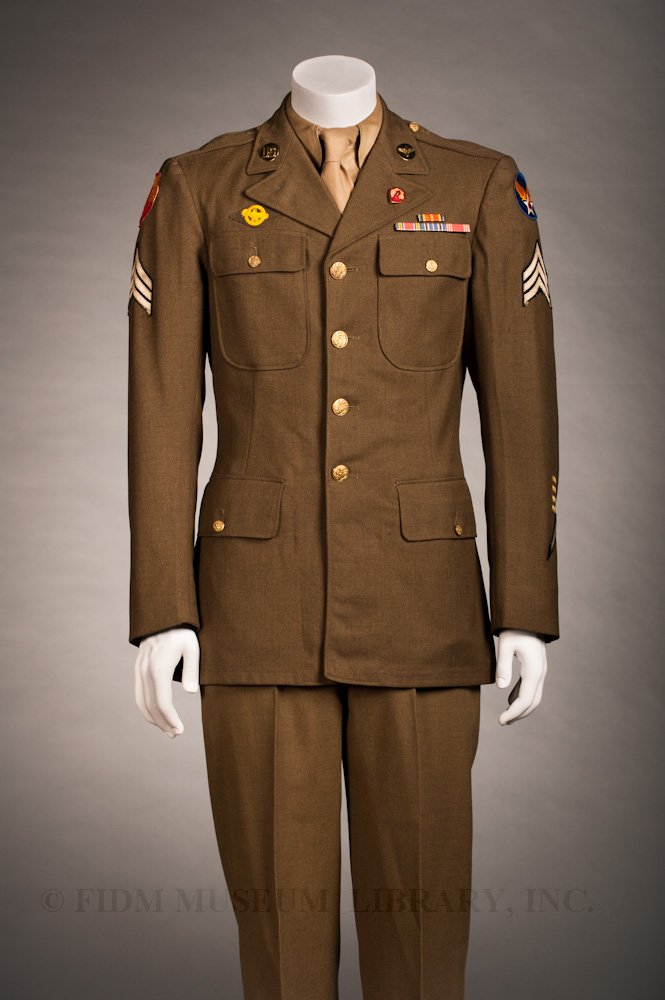United States Army Air Forces dress uniform, c. 1943
Freedom's On Me, an exhibition of Poto Leifi's poignant, stylized portraits of fallen soldiers, opens today. This free exhibit will be open daily, 10 am-5 pm, through June 1, including Memorial Day. In honor of this commemorative exhibit and Memorial Day, today's blog post features a World War II military uniform.
If you can read their meaning, insignia worn on military uniforms offer a tremendous amount of information about the wearer. Each pin or badge signifies something specific, including rank, accomplishments, special skills, length of service, location of service, and honors. To those outside the military, the variety and meaning of these insignia can be bewildering. To those in the know, insignia offer a way to quickly establish who's in charge, and help situate members of the military in relation to each other. United States Army Air Forces dress uniform
United States Army Air Forces dress uniform
c. 1943
Gift of Fullerton Museum Collection
97.1942.980.51A-D
We're still researching this dress uniform, but what we've learned so far is fascinating. It's missing a belt, so we know the uniform is incomplete. Inverted black and white Vs at each shoulder indicate that the wearer was a sergeant, while four yellow stripes at the proper left cuff reveal that he served four six-month tours of duty outside the contiguous United States. A circular blue/gold/white insignia on the proper left shoulder indicates that the wearer belonged to the United States Army Air Force (USAAF or AAF), the predecessor to today's United States Air Force. The USAAF existed from 1941/42 until 1947, so we know the uniform dates from the 1940s.
A red and yellow patch on the uniform's proper right shoulder reveals even more specific information and is linked to the yellow bars seen on the cuff. Featuring a stylized lighthouse probably based on Morro Castle in San Juan, Puerto Rico, the patch signifies the Antilles Department. Based at Borinquen Field in Puerto Rico from 1942/43 until 1946, the Antilles Department defended the Caribbean, with an emphasis on anti-submarine operations. The active dates of this department help us narrow down the date of the uniform even further.
The most fascinating insignia is the small yellow emblem above the proper right breast pocket. Featuring an eagle in a roundel, it was awarded to military personnel honorably discharged at the end of World War II. Sometimes called the "ruptured duck," it allowed veterans to wear their uniform without fear of being considered AWOL, an important privilege in a time of civilian cloth and clothing shortages. It also gave veterans access to free and subsidized transportation.
Clearly, there's more to learn about this uniform and its various insignia. Did we miss something? Feel free to drop us a line, or send us an email with your insight, information, or comment. We'd love to hear from you!